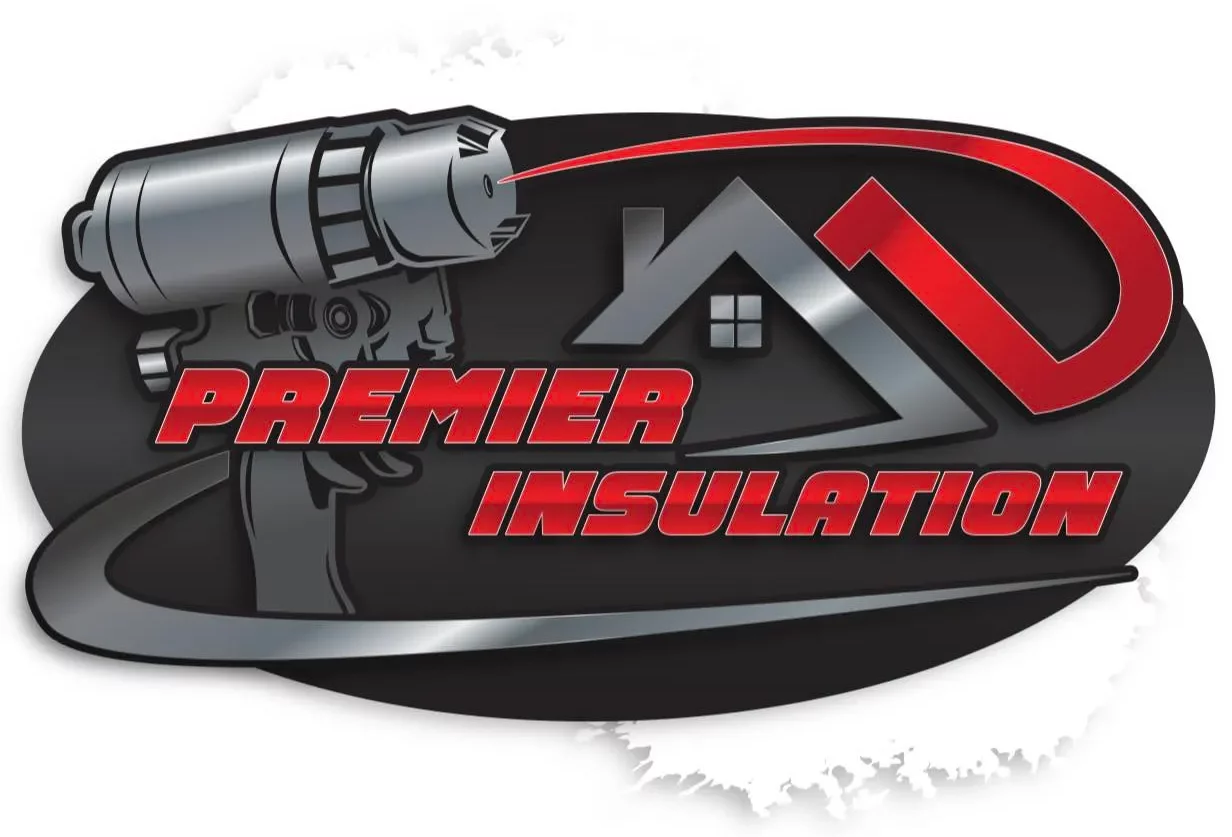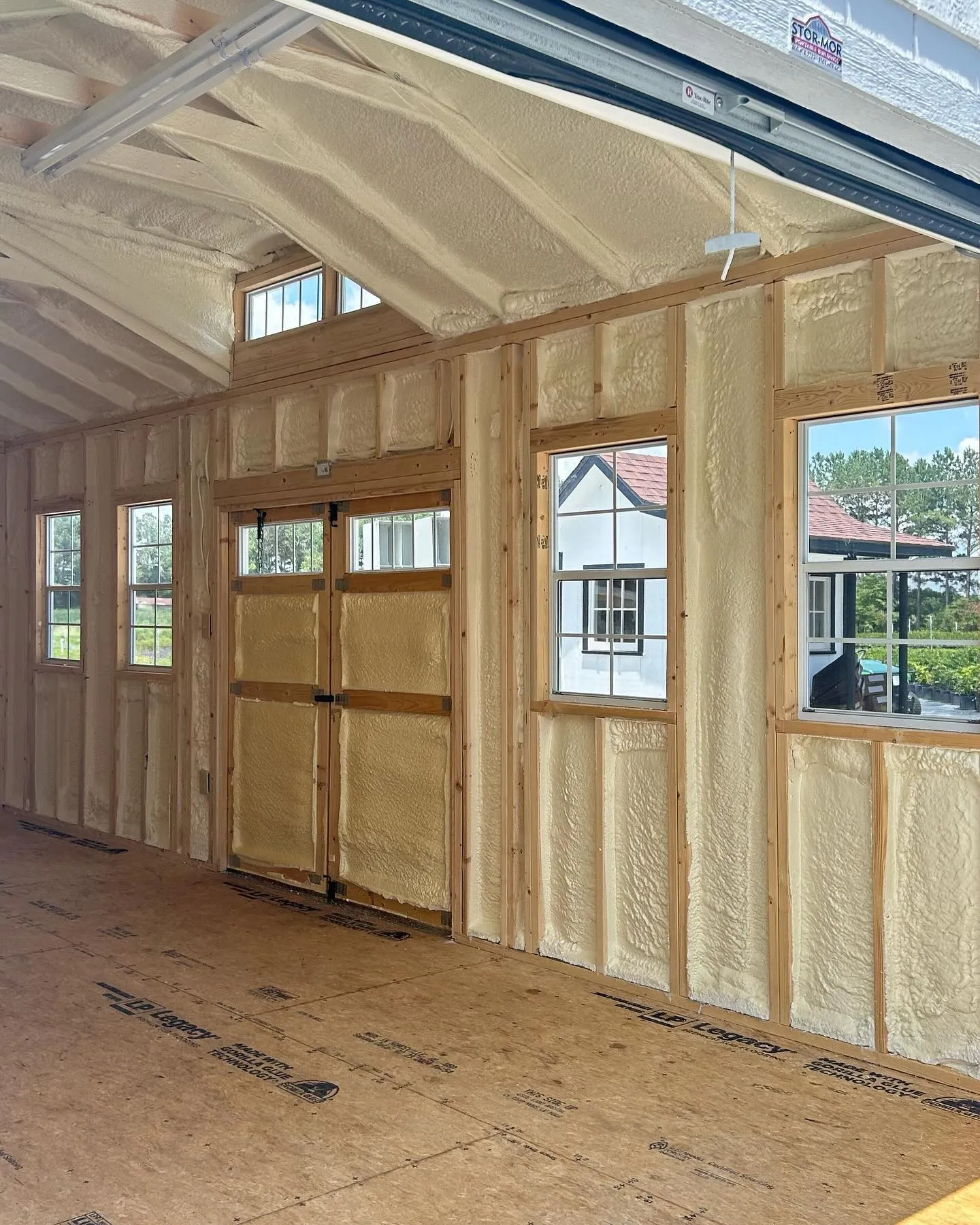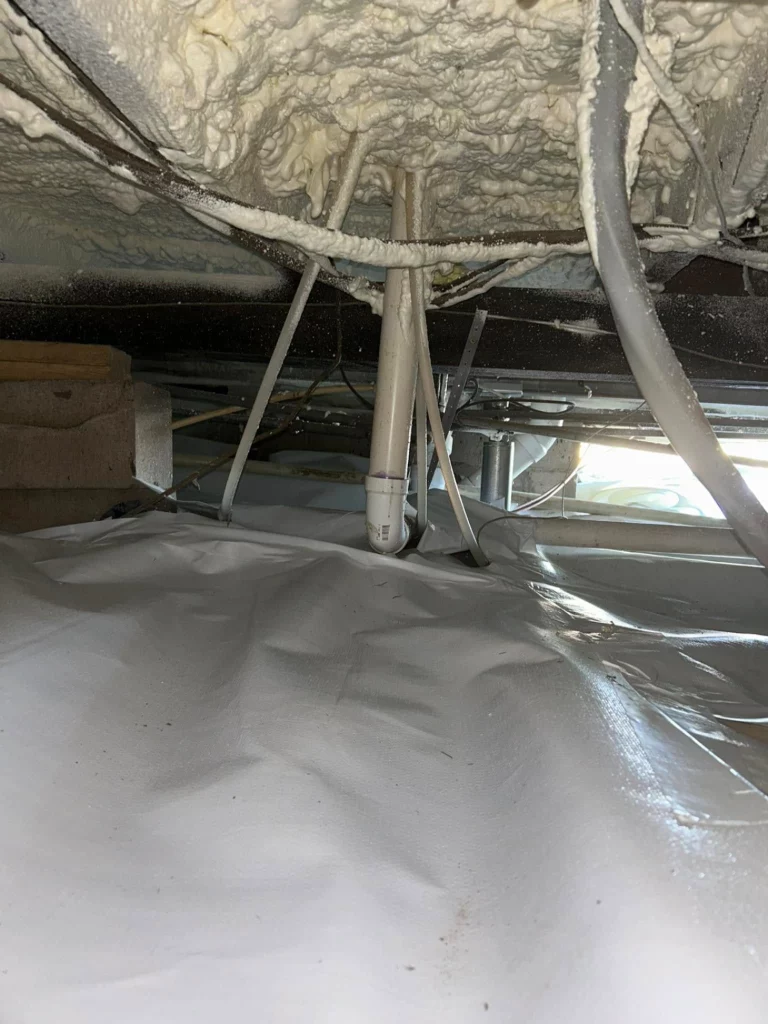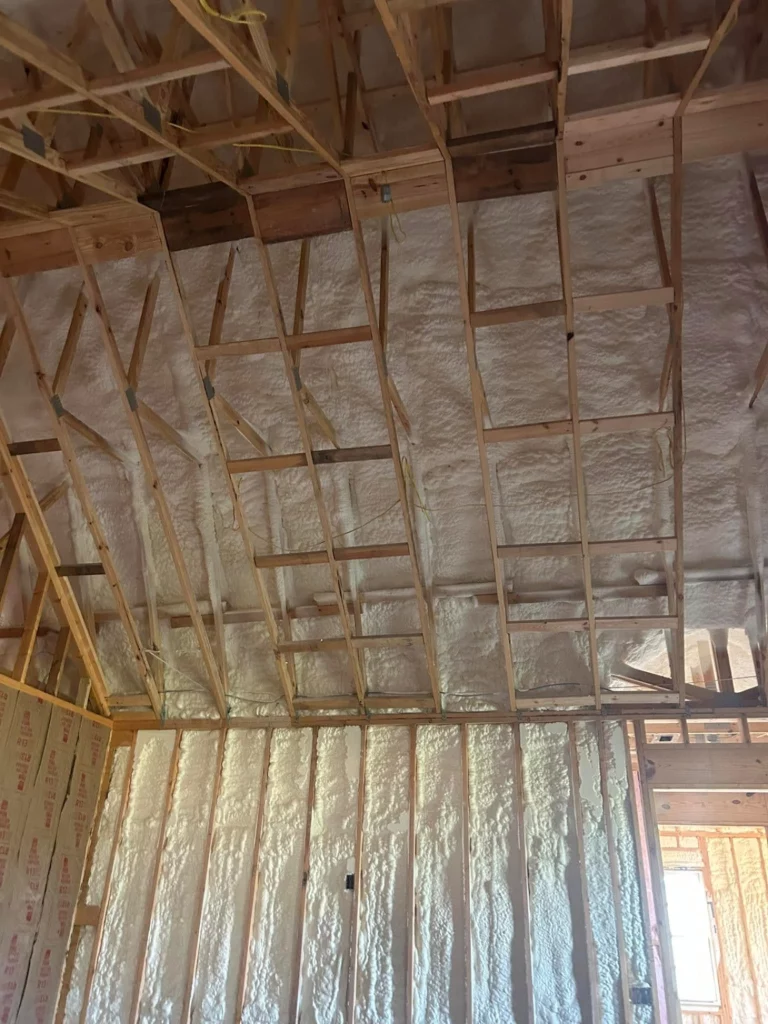Buildings today face constant pressure to perform better. Energy costs keep rising, and stricter codes demand improved efficiency. Homeowners and builders often struggle to find insulation that seals air leaks without complicating installation. Spray foam insulation steps in as a versatile answer. It expands to fill gaps, creating a tight barrier against heat, cold, and moisture.
This guide covers spray foam insulation from the ground up. You’ll start with the basics: what it is and how it works. Then, move into the different types available and their specific uses in modern structures. Next, explore the installation steps, along with tips to get it right. You’ll see real benefits for energy savings and comfort, backed by data. Address potential drawbacks and ways to handle them. Finally, look at costs, returns on investment, and what’s coming next in the field.
Building on this outline, this resource draws from years of working with insulation in various projects to give you clear, practical knowledge. Whether you’re a homeowner planning a retrofit or a contractor tackling new builds, you’ll find details to make informed choices. By the end, you’ll know how spray foam fits into creating durable, efficient buildings.
Understanding Spray Foam Insulation Basics
Spray foam starts as a liquid mixture of two chemicals: polyol resin and isocyanate. When mixed at the nozzle during application, they react and expand into foam. This process happens fast, often within seconds, forming a solid that adheres to surfaces like wood, metal, or concrete.
Why choose spray foam over traditional options like fiberglass batts or cellulose? It offers superior air sealing. Gaps and cracks that let conditioned air escape disappear under its expanding action. In modern buildings, where energy codes require R-values of 30 or higher in attics, spray foam delivers consistent performance without settling over time.
Consider a typical single-family home. Without proper insulation, it can lose up to 30% of its heating or cooling through the envelope, according to the U.S. Department of Energy. Spray foam reduces that loss by creating a continuous barrier.
You’ll encounter terms like open-cell and closed-cell foam. Open-cell feels softer and absorbs sound well, while closed-cell remains rigid and resists water. Each has a place depending on your building’s needs.
Types of Spray Foam Insulation
Two main categories dominate the market: open-cell and closed-cell spray foam. Each brings unique properties that suit different parts of a building.
Open-Cell Spray Foam
Open-cell spray foam expands more than its closed counterpart, about 100 times its liquid volume. It contains air pockets that make it lighter and less dense, typically around 0.5 pounds per cubic foot. This type provides an R-value of about 3.5 to 4 per inch, which means you need thicker layers for the same insulation as denser materials.
Builders often use open-cell in interior walls or attics where soundproofing matters. It dampens noise from room to room, a big plus in multi-story homes. Also, it allows some vapor to pass through, which can prevent moisture buildup in humid climates if paired with proper ventilation. For retrofitting older homes, this makes it ideal for living spaces, boosting comfort without major structural changes.
However, open-cell doesn’t block water as effectively. In areas prone to leaks, like basements, it might not be the first choice.
Closed-Cell Spray Foam
Closed-cell spray foam packs tighter cells with no open spaces for air. Its density ranges from 1.7 to 2.3 pounds per cubic foot, giving it an R-value of 6 to 7 per inch. That efficiency means thinner applications meet code requirements.
This type shines in exteriors or below-grade spaces. It acts as a moisture barrier and adds structural strength—up to 50% more rigidity to walls, per tests from the Spray Polyurethane Foam Alliance. In coastal buildings battered by storms, that extra support counts.
Closed-cell costs more upfront but pays off in wet environments by preventing mold growth.
Here’s a quick comparison:
| Feature | Open-Cell Foam | Closed-Cell Foam |
|---|---|---|
| R-Value per Inch | 3.5 – 4.0 | 6.0 – 7.0 |
| Density (lbs/ft³) | 0.4 – 0.8 | 1.7 – 2.3 |
| Best For | Interiors, sound control | Exteriors, moisture barriers |
| Cost (per sq ft) | $0.50 – $1.00 | $1.00 – $2.50 |
Data pulled from industry standards shows the U.S. spray foam market hit $1.2 billion in 2022, with closed-cell leading due to its durability, as reported by Grand View Research.
Benefits of Spray Foam in Modern Buildings
Modern buildings prioritize sustainability and occupant health. Spray foam aligns with those goals by sealing the building envelope completely. Air infiltration drops by up to 75%, leading to lower utility bills. A study from Oak Ridge National Laboratory found homes with spray foam used 23% less energy for heating.
Comfort improves too. Drafts vanish, and temperatures stay even throughout rooms. In summer, it blocks radiant heat; in winter, it keeps warmth inside.
From an environmental angle, spray foam lasts 80 years or more without degrading, reducing the need for replacements that contribute to waste. Many formulations now use blowing agents with low global warming potential, meeting EPA guidelines.
While the benefits are substantial, spray foam isn’t without challenges, such as higher costs and installation needs, which we’ll cover next.
Market data underscores growth: The global insulation market, including spray foam, is projected to reach $110 billion by 2030, driven by green building standards, according to MarketsandMarkets.
For commercial spaces, spray foam cuts HVAC loads. Offices with it report 15-20% savings on cooling, per data from the Department of Energy.
Installation Process Step by Step
Installing spray foam requires precision to avoid issues like off-gassing or uneven coverage. Professionals handle it best, but understanding the steps helps you prepare.
Preparation
Clear the area of debris and ensure surfaces are dry and clean. For attics, protect vents and electrical with barriers. In walls, remove old insulation if it’s compressed.
Equipment Setup
Contractors use a spray rig with heated hoses to maintain the chemicals at 120-140°F. Protective gear—respirators, suits—is essential due to the fumes during curing.
Application
Start at the bottom or farthest point, spraying in layers of 1-2 inches. Let each cure before the next to prevent sagging. For roofs, apply in passes to build thickness evenly.
In tight spots, use smaller kits for DIY touch-ups, but full jobs demand pros.
Finishing
Trim excess with a saw once cured (usually 24 hours). Seal any exposed areas to maintain the air barrier.
Expert Tip: Always check local codes for minimum thicknesses—some areas require 3 inches of closed-cell for basements.
Common pitfalls include over-spraying, which wastes material, or under-spraying, leaving voids. Proper training prevents that.
Applications Across Building Types
Building on the properties of open- and closed-cell foams, spray foam adapts to homes, offices, and warehouses alike.
In residential settings, it excels in attics and rim joists. A new build might use closed-cell under slabs for radiant barrier effects.
Commercial buildings benefit from roof applications. Flat roofs on warehouses seal against leaks, extending lifespan by 20-30 years.
For multifamily units, open-cell in party walls reduces noise complaints.
Retrofits pose challenges in existing structures, but injectable foam fills cavities without demolition.
Key Takeaways:
- Choose open-cell for sound and cost savings in interiors.
- Opt for closed-cell in wet areas for protection.
- Professional installation ensures even coverage and code compliance.
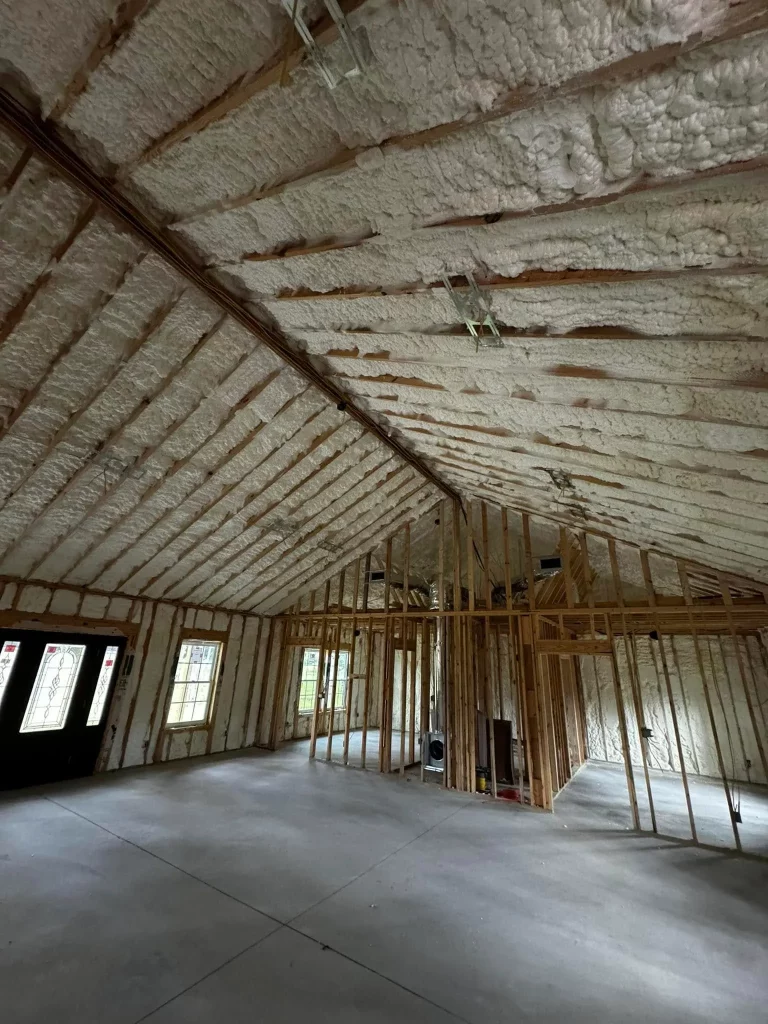
Addressing Common Challenges
While spray foam offers many advantages, no material is perfect. Spray foam can be pricey—$1 to $3 per square foot installed. Off-gassing during application releases VOCs, so ventilation matters.
Moisture sensitivity affects open-cell if not managed. Pair it with vapor barriers in cold climates.
UV exposure degrades foam if left uncovered outdoors, so paint or cover it.
To overcome costs, calculate long-term savings. Payback often occurs in 3-5 years through energy reductions.
Expert Tip: Test for air leaks with a blower door before and after to verify performance—aim for under 3 ACH50.
Health concerns? Modern foams have reduced chemicals, but sensitive individuals should vacate during install.
Calculating Costs and ROI
Upfront expenses vary by type and area. A 1,000 sq ft attic might cost $2,500 for open-cell, $4,000 for closed.
ROI comes from savings. With average U.S. energy costs at $0.13/kWh, a 20% reduction saves $300 yearly on a $1,500 bill.
Use this table for quick estimates:
| Building Size (sq ft) | Open-Cell Cost | Closed-Cell Cost | Est. Annual Savings |
|---|---|---|---|
| 1,000 | $1,000 – $2,000 | $2,000 – $4,000 | $200 – $400 |
| 2,000 | $2,000 – $4,000 | $4,000 – $8,000 | $400 – $800 |
| 5,000 (Commercial) | $5,000 – $10,000 | $10,000 – $20,000 | $1,000 – $2,000 |
Data from HomeAdvisor shows 85% satisfaction among users due to these returns.
Factor in incentives like federal tax credits up to $1,200 for efficient upgrades.
Environmental and Sustainability Aspects
Spray foam’s footprint has improved. Newer HFO blowing agents replace older HFCs, cutting GWP by 99.9%, as noted by Honeywell.
It conserves resources by reducing energy use—buildings account for 40% of U.S. carbon emissions, per the EPA.
Recycling challenges exist, but some foams break down for reuse in products.
Future formulations aim for bio-based chemicals to further green the process.
Expert Tip: Look for products certified by Greenguard for low emissions to ensure indoor air quality.
Emerging Trends in Spray Foam Technology
Innovation pushes spray foam forward. Variable-rate sprayers now adjust density on the fly for optimized performance.
Bio-based foams incorporate plant oils, reducing petroleum reliance. Expect wider adoption by 2025.
Smart monitoring integrates with IoT to track insulation effectiveness over time, alerting to degradation.
Market stats predict a 6.5% CAGR through 2030, fueled by net-zero building mandates, from Allied Market Research research.
Key Takeaways:
- Energy savings drive ROI, often within years.
- New eco-friendly agents lower environmental impact.
- Tech like smart sensors will enhance long-term monitoring.
Putting Your Spray Foam Insulation Strategy into Action
This guide equips you with knowledge to select and implement spray foam effectively. From basics to trends, you’ve seen how it solves key building challenges. Refer back as needed when planning your project. Start by assessing your space’s needs, then consult specs and local incentives to move forward confidently.
Need Expert Guidance?
For tailored advice on spray foam solutions, reach out to Premier Insulation at premiereinsulationga@gmail.com or call (229) 554-3939. Their team can assess your building and recommend the best approach to achieve efficiency and durability. Premier Insulation brings proven experience to every project, ensuring results that last.
Sources
- U.S. Department of Energy – Official guide on insulation types and energy savings in buildings.
- Oak Ridge National Laboratory – Research on energy efficiency, including studies on spray foam performance.
- Grand View Research – Market report on spray foam industry growth and projections.
Frequently Asked Questions About Spray Foam Insulation
Is spray foam insulation safe for indoor use?
Yes, once cured, it’s inert and doesn’t release harmful chemicals. During installation, ventilate well and follow safety protocols to manage fumes.
How long does spray foam last?
It endures 25-80 years without losing R-value, depending on exposure and type. Proper application extends its life.
Can I install spray foam myself?
Small kits work for minor jobs, but large-scale work needs certified pros to ensure even coverage and safety.
Does spray foam attract pests?
No, its structure deters insects and rodents better than fiberglass, which they can nest in.
What’s the difference in cost between spray foam and other insulations?
It’s higher initially—twice that of batts—but lower long-term energy use offsets the difference quickly.
Is spray foam fire-resistant?
It self-extinguishes and meets fire codes when covered with drywall. Add intumescent coatings for extra protection in exposed areas.

